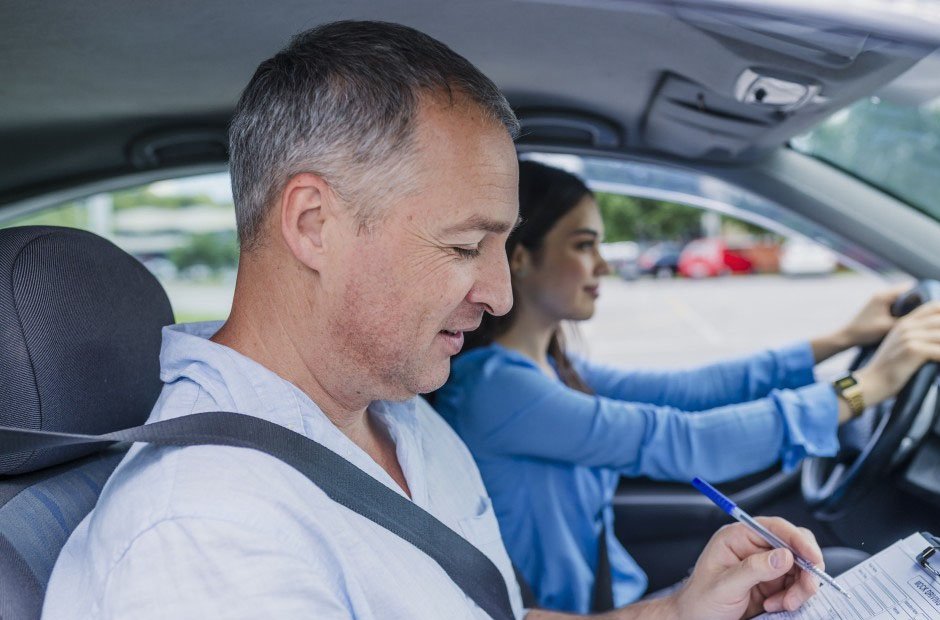Skip to the good bit
ToggleDriving symbolizes the transition to adulthood, bringing both freedom and responsibility. With numerous accidents resulting from preventable mistakes, safe driving is crucial for your safety and that of others. This guide provides new drivers with essential knowledge and skills to foster safe and confident driving.
Understanding the Basics
Before hitting the road, it’s crucial to grasp the fundamentals of driving. One of the most important aspects of road safety is adhering to speed limits and road signs. Speed limits are set based on the type of road and the area it passes through, such as residential zones or highways. Ignoring these limits increases the risk of accidents and can lead to hefty fines and penalties.
Equally important is understanding the concept of the right of way, especially at intersections. These are common points for accidents as drivers often misjudge who has the priority. Generally, vehicles on the main road have the right of way, but always be cautious and courteous. Yielding when necessary can prevent collisions and keep traffic flowing smoothly.
Navigating intersections can be daunting for new drivers. It’s crucial to approach them with caution and always look both ways before proceeding. Understanding traffic light signals and pedestrian crossings will help you make informed decisions, keeping you and others safe.
Defensive Driving Techniques
Defensive driving is about being proactive and prepared for the unexpected. One key aspect is maintaining a safe following distance. This allows you enough reaction time if the vehicle in front of you suddenly stops. A good rule of thumb is the “three-second rule”—choose a fixed point on the road and ensure at least three seconds pass before your car reaches that point after the vehicle is ahead.
Anticipating the actions of other drivers is another crucial component of defensive driving. Always be aware of your surroundings and watch for signs of erratic behavior, like sudden lane changes or braking. By staying alert, you can predict potential hazards and react accordingly to avoid collisions.
Finally, always have an escape plan. In case of an emergency, knowing your options can prevent panic and allow you to steer clear of danger. Whether it’s changing lanes to avoid a reckless driver or slowing down to create space, being prepared is key.
Distracted Driving
In today’s fast-paced world, distractions are everywhere, especially behind the wheel. Mobile phones are one of the most significant contributors to distracted driving, leading to many accidents. Texting, calling, or even using GPS without proper setup can divert your attention and increase the risk of a crash.
To minimize distractions, set up your phone before you start driving. Use hands-free devices if necessary or better yet, put your phone on “Do Not Disturb” mode. Additionally, avoid eating, applying makeup, or engaging in activities that can take your eyes off the road.
Another tip to stay focused is to keep the interior of your car clutter-free. Loose items can become projectiles in the event of sudden stops and can also distract you as you drive. Maintaining a clean car environment helps you remain attentive and reduces potential distractions.
Dealing with Adverse Conditions
Driving in adverse weather conditions requires extra caution and preparation. Rain, snow, fog, and ice can significantly affect visibility and road traction, increasing the risk of accidents. When driving in such conditions, reduce your speed and increase your following distance to allow for longer stopping times.
In case of a skid, it’s essential to remain calm and know how to react. If your car begins to skid, gently steer in the direction you want the front wheels to go. Avoid slamming on the brakes, as this can worsen the skid. Instead, ease off the gas and steer gently until you regain control.
Always ensure your vehicle is well-maintained, with good tire tread and functioning wipers, to handle adverse conditions better. Having a well-stocked emergency kit with essentials like blankets, food, and a flashlight can also be invaluable if you get stranded.
Handling Roadside Emergencies
Roadside emergencies can happen to anyone, anytime. Knowing how to handle them is crucial for your safety and peace of mind. In the event of a flat tire, engine trouble, or any other issue, the first step is to find a safe spot to pull over. Turn on your hazard lights to alert other drivers.
Having a roadside emergency kit is essential. It should include tools for changing a tire, jumper cables, reflective triangles, and a first aid kit. Familiarize yourself with how to use these tools, as they can make a significant difference during an emergency.
If you encounter a more serious situation, such as a car collision, having a car accident lawyer, like those in Utah, can be invaluable. If you can’t resolve the issue on your own, call for roadside assistance or a towing service. Stay with your vehicle until help arrives, but stand at a safe distance from traffic if you need to exit the car.
The Impact of Impaired and Aggressive Driving
Driving under the influence of alcohol or drugs is not only illegal but incredibly dangerous. It impairs judgment, slows reaction times, and increases the likelihood of accidents. Always plan—designate a sober driver or use a ride-sharing service if you intend to drink.
Aggressive driving, such as tailgating or road rage, also poses a significant threat on the road. Such behavior can escalate quickly, leading to dangerous situations. Always maintain a calm demeanor, even if others drive aggressively. Your priority should be to keep yourself and others safe.
Understanding the legal and personal consequences of impaired and aggressive driving is crucial. Fines, license suspension, and even imprisonment can result from these actions, not to mention the potential for causing harm to yourself and others.
Conclusion
Having grasped the fundamentals of safe driving, it’s crucial to remain vigilant and responsible on the road. Employ defensive driving techniques, minimize distractions, and be ready for adverse conditions and emergencies. By doing so, you contribute to making our roads safer for everyone. Safe travels!







